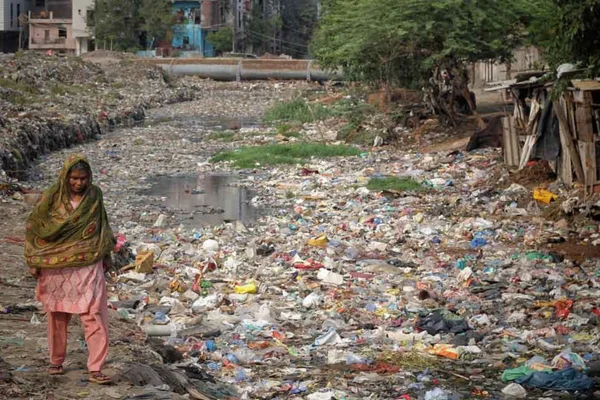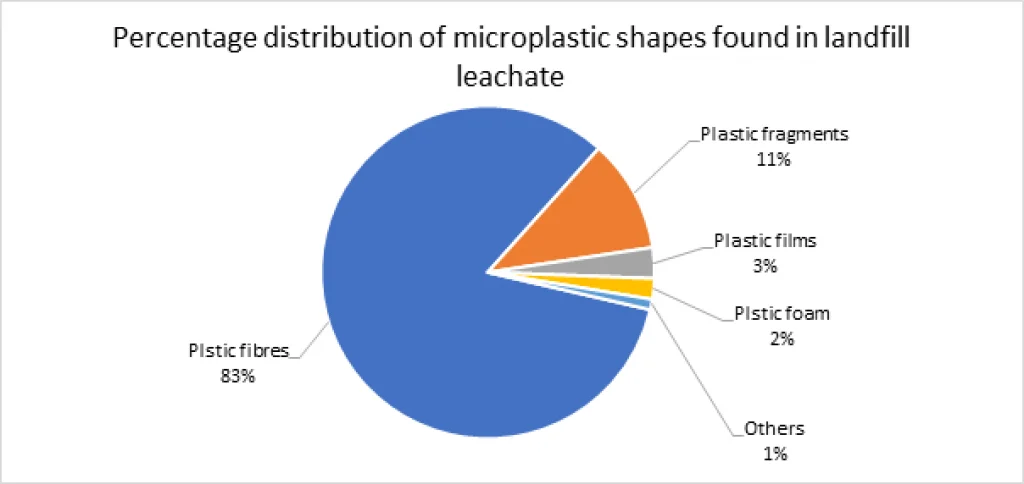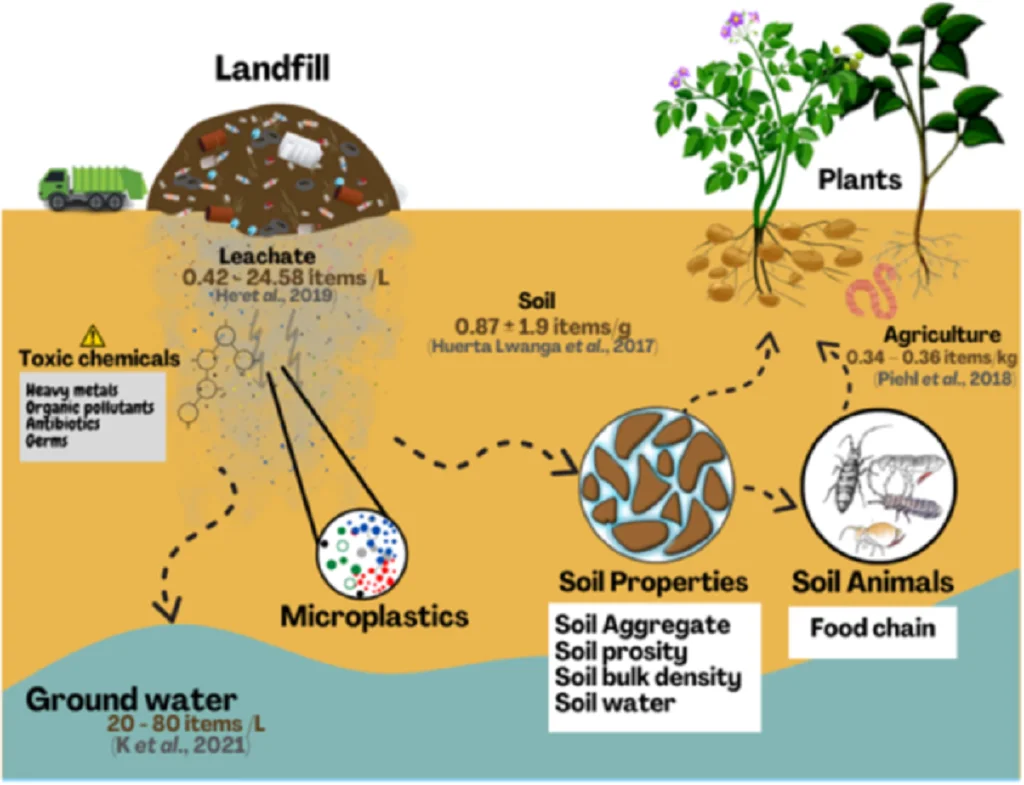Recent studies highlight the presence of microplastics in landfill leachate and groundwater, posing environmental and health risks.
What are Microplastics?
- Microplastics are tiny pieces of plastic debris that are less than 5 millimeters in size, often too small to be easily seen by the naked eye.
- They result from the breakdown of larger plastic items through weathering, photo-degradation, thermal degradation, mechanical fragmentation, and biodegradation.
Main categories of microplastics:
- Primary: Plastic particles manufactured to be small, like microbeads in personal care products, pellets used in plastic manufacturing, and fibers after washing synthetic textiles.
- Secondary: These particles result from the degradation of larger plastic items, that break down over time due to various environmental factors.
- These include particles derived from the weathering and breakdown of plastic items like packaging materials, bottles, and other plastic products.
Key Findings in the study:
- Organic waste (food waste and greens) at landfill sites decomposes faster with microbial activities under predominantly anaerobic conditions, producing leachate and gaseous emissions.
- Most Plastic items are non-biodegradable in nature and remain intact in landfills.
- Main sources of plastic in landfills: Disposable diapers, sanitary pads, carry bags, multi-layered packaging items, packaging sheets, container bottles, polyvinyl chloride (PVC) pipes, footwear, disposable cups, and plastic utensils.
- Biochemical reactions cause 30-60 °C fluctuations, high salinity, low pH, and release gases like methane, carbon monoxide, carbon dioxide, ammonia and hydrogen sulphide.
- These create an environment conducive to disintegration of plastic items into smaller pieces.
- Physical processes like weathering of larger particles through photo-degradation, thermal degradation, mechanical fragmentation and biodegradation can form microplastics.
Study 1:
- A Landfill Leachate study conducted in Hyderabad revealed that Microplastic concentrations ranged from 9-21 items per litre.
- Predominant shapes: Fiber (83%), fragment (11%), film (3%), foam (2%).
- Colors: Yellow (35%), transparent (16%), purple (15%), etc.
- Dominant polymers: Low-density polyethylene, polypropylene, polyterethalate, cellulose acetate, and nitrile.
Study 2:
- A Groundwater Study conducted by Institute for Ocean Management found that microplastic contamination in the range of 2-80 items per litre.
- Colored particles include white (38%), black (27%), green (8%), etc.
- Predominant polymer type: Nylon (70%), pellets (18%), foam (6%), etc.
- 90% of microplastics are derived from buried plastics and waste fragmentation, mainly polypropylene and polystyrene.
Implications and Recommendations:
- Uncontrolled plastic disposal in landfills is a primary source of plastic pollution, leading to the formation of pervasive microplastics.
- Comprehensive policy approaches, including waste management policies and efficient collection systems, are crucial to limit plastic influx into landfills.
- Existing regulations such as the Solid Waste Management Rules (2016) and recent bans on single-use plastics need strict enforcement.
- Scientific landfill design, advanced containment systems, and the remediation of open dumpsites are essential to prevent leachate dissemination of microplastics.
- Investing in research, incentivizing innovation, and promoting a circular economy approach can strengthen India’s strategy to combat microplastic contamination from landfills.
Ref: Source
| UPSC IAS Preparation Resources | |
| Current Affairs Analysis | Topperspedia |
| GS Shots | Simply Explained |
| Daily Flash Cards | Daily Quiz |




